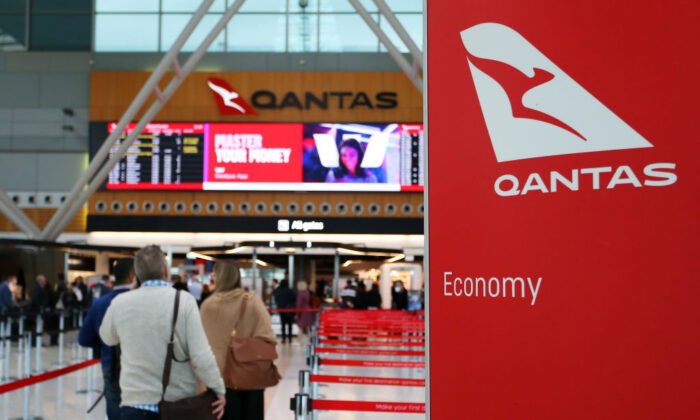Qantas Introduces Innovative Cabin Lighting to Minimize Jet Lag on Long Flights
The lighting will feature in future Qantas long-haul flights, including London and New York.
Qantas has developed new cabin lighting for long-haul flights from Australia’s east coast to London and New York following 150 hours of testing.
The airline’s Project Sunrise seeks to reduce jetlag and improve wellbeing by taking inspiration from the colours of the Australian landscape.
After hours of testing at the Airbus Customer Definition Centre in Hamburg, Qantas created more than a dozen new lighting scenes.
The airline staff worked with representatives from Airbus, the University of Sydney’s Charles Perkins Centre, and the Caon Design Office.
They examined hundreds of lighting patterns and sequences to develop the Airbus A350 cabin mockup.
Based on modelling of the circadian rhythm, the Charles Perkins Centre developed optimal spectral irradiances for light to promote circadian adaption, sleep, and wake.
The lighting sequence will be tailored to help passengers adjust to a time zone before they land at the new destination.
New Lighting Scenes Include ‘Sunset’ and ‘Awake’
Twelve new lighting scenes have been produced for these Project Sunrise flights including awake, sunset, and sunrise.
Sunset relaxes passengers and prepares them for sleep via an immersive transition from daytime mode into dark. This moves through the colours of a sunset into a night sky with moonlight.
Awake is a broad-spectrum, blue-enriched lighting mode to help customers adjust to the destination time zone and stay awake.
Sunrise replicates an Australian sunrise rolling from the front of the cabin to the rear to help transition from night to day.
Qantas International CEO Cam Wallace said the scientifically informed lighting design was another important component of the preparation for Project Sunrise non-stop flights. These connect Australia’s east coast with London and New York.
“These world-first flights have been an opportunity for us to work with experts and build on our experience of long-haul flying to rethink the inflight experience with a focus on customer wellbeing and combating the effects of jetlag,” Mr. Wallace said.
Mr. Wallace explained it was clear from the research that light cycles and brightness are important for setting the body clock.
“Combined with the design of the cabins, specialised meal planning, and the movement program, this unique lighting sequence will help improve our customers’ comfort in the air and minimise their jetlag when they arrive at their destination,” he said.
Meanwhile, Australian industrial designer David Caon said the lighting workshops were the culmination of five years of cabin design with Qantas to improve customer wellbeing inflight.
“Aircraft lighting doesn’t cross the mind of most travellers but the external light cycle of night and day has more impact on our circadian rhythm and the impact of jetlag than any other factor,” he said.
Airbus Commercial Aircraft Senior Vice-President of Marketing Joost van der Heijden said the A350 Airspace cabin had been designed to provide passengers with the best possible flight experience.
“This includes more personal space, the quietest cabin in the sky, highest air quality, and full connectivity throughout,” he said.
He said the unique and innovative state-of-the-art LED lighting system offers over 16 million color combinations.
Qantas shares fell 1.64 percent on the Australian Stock Exchange on July 19, but have surged nearly 12 percent in the year to date.
University of Sydney Says Modifying Light Helps Passengers
Associate Professor Sveta Postnova, circadian modeling at the Charles Perkins Centre, was pleased that Qantas utilized previous research on how circadian-smart cabin lighting improves health and wellbeing in the air.
Ms. Postnova and other experts found that manipulating the timing, strength, and wavelengths of light during a flight helps passengers adapt to the destination’s time zone.
Meanwhile, a separate paper published in Building and Environment found that constant lighting in confined spaces can lead to a delay in the circadian rhythm. The paper noted nocturnal bright light may delay the circadian rhythm and worsen sleep.






